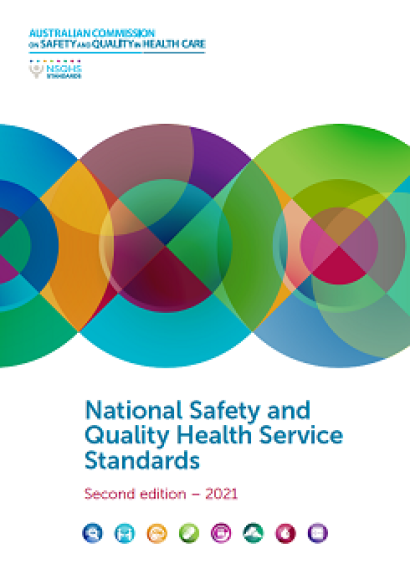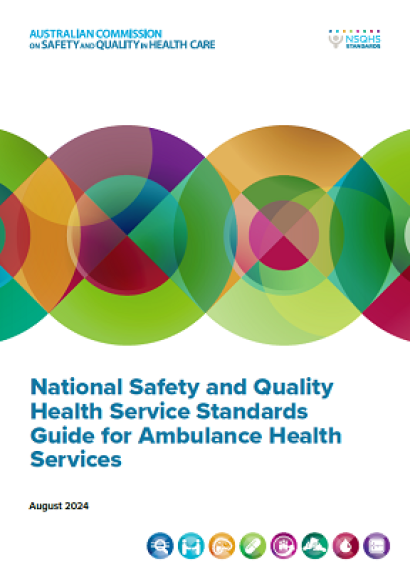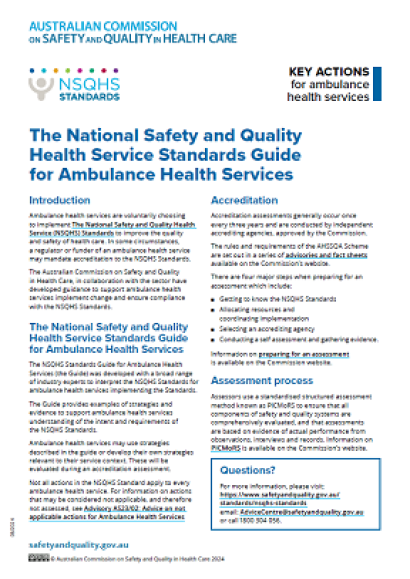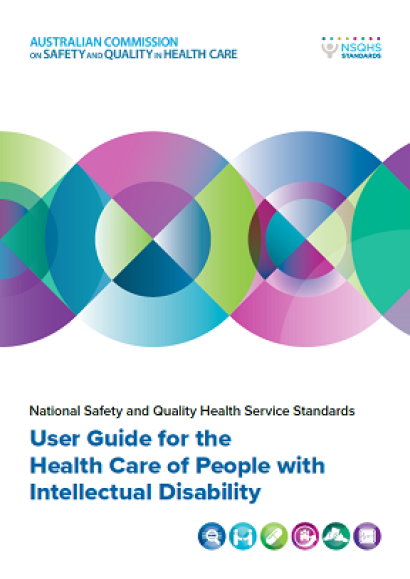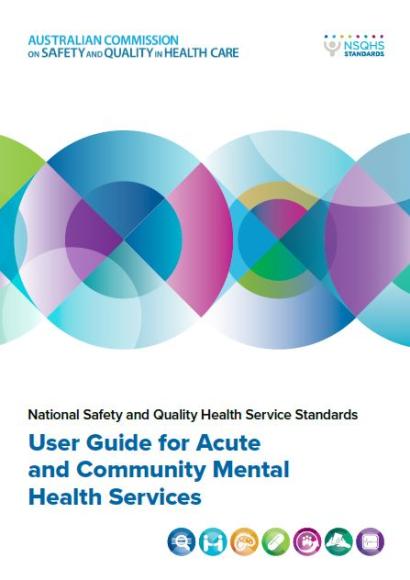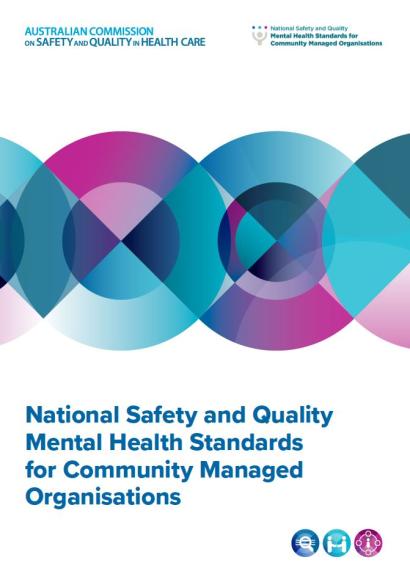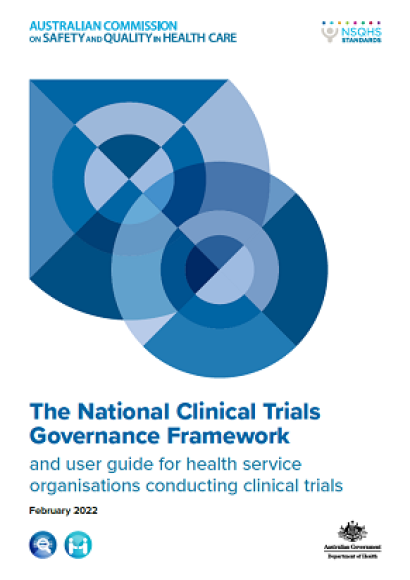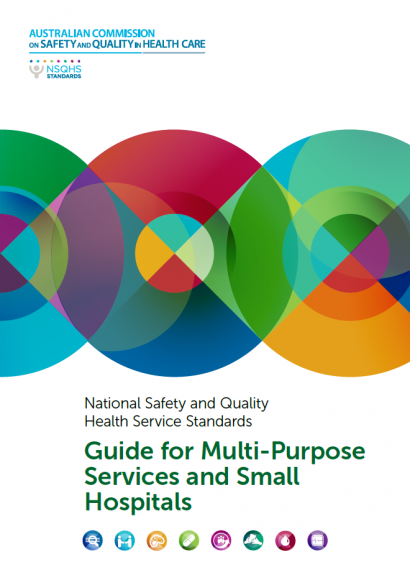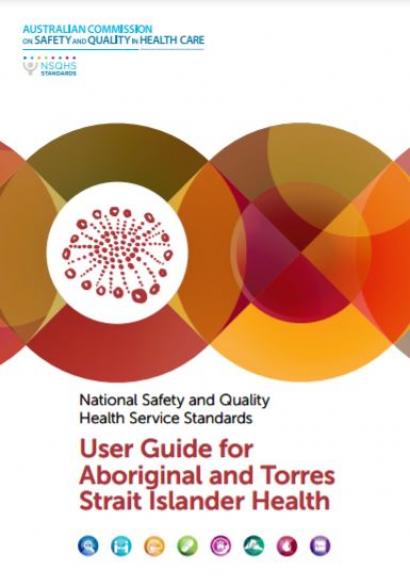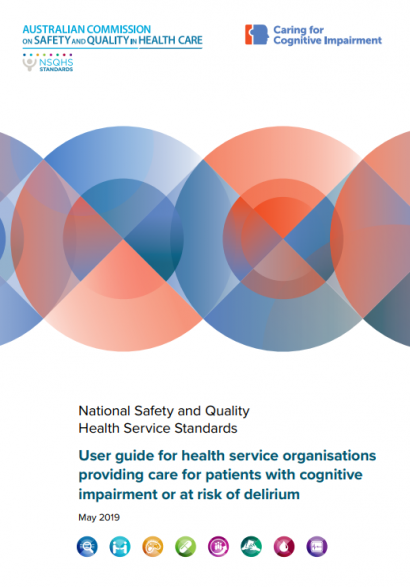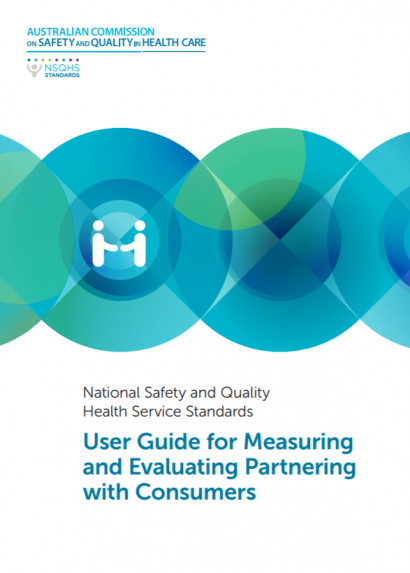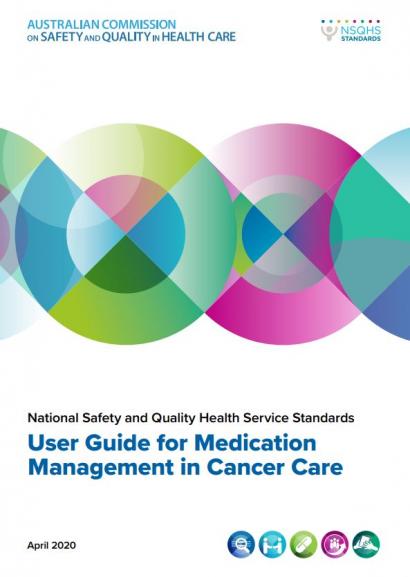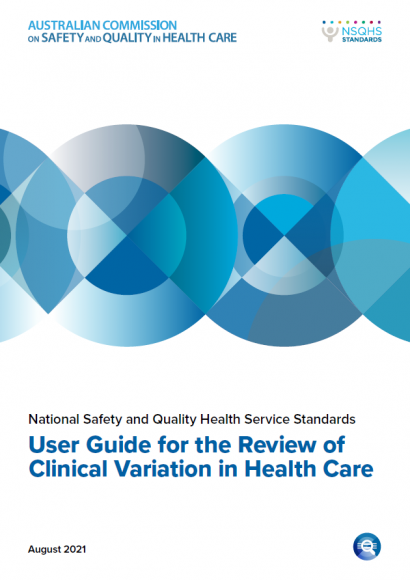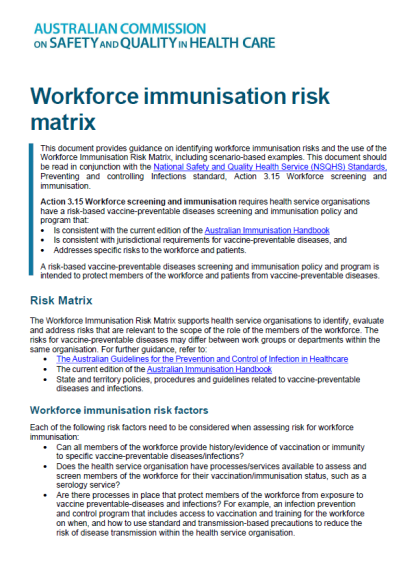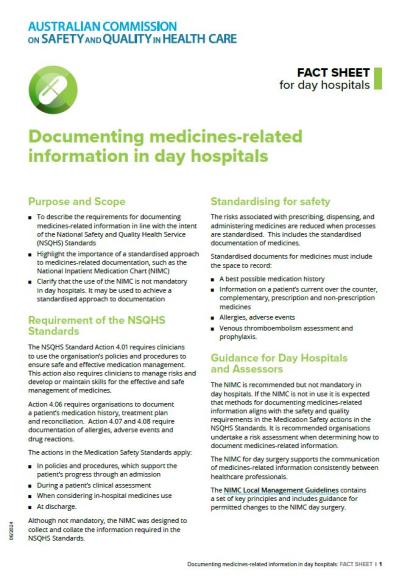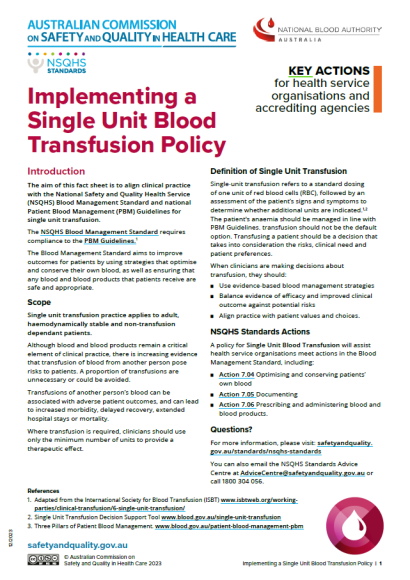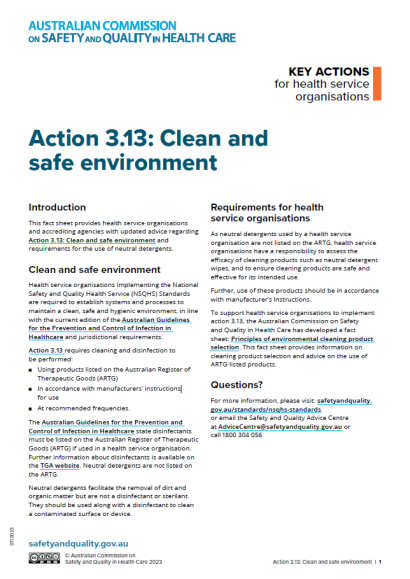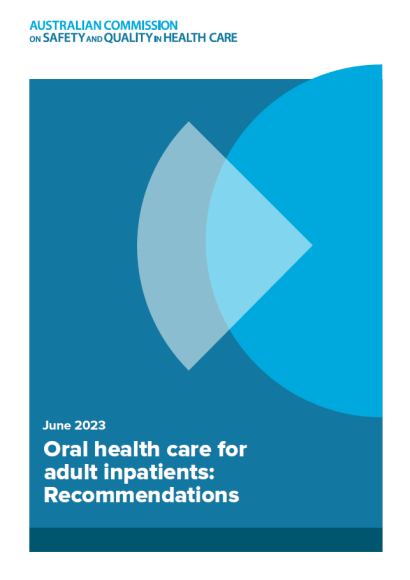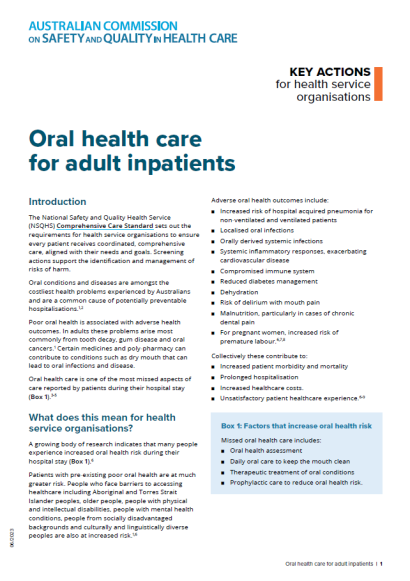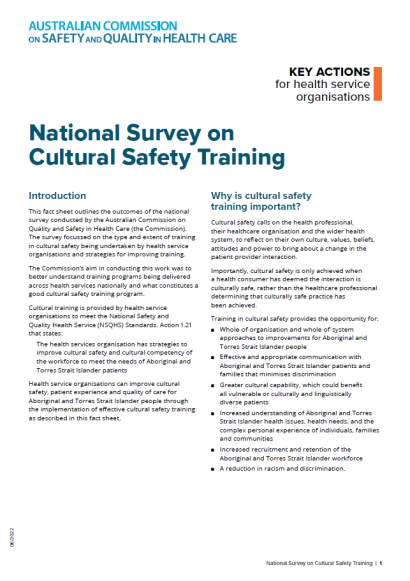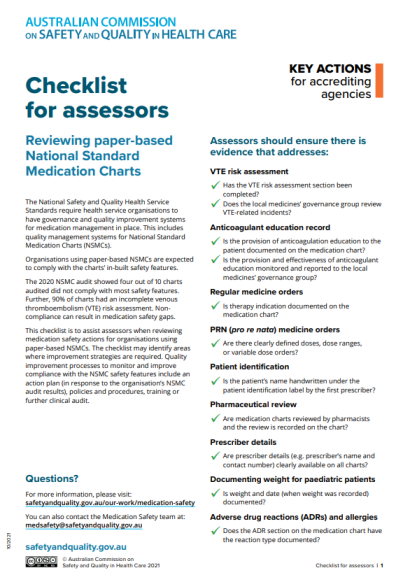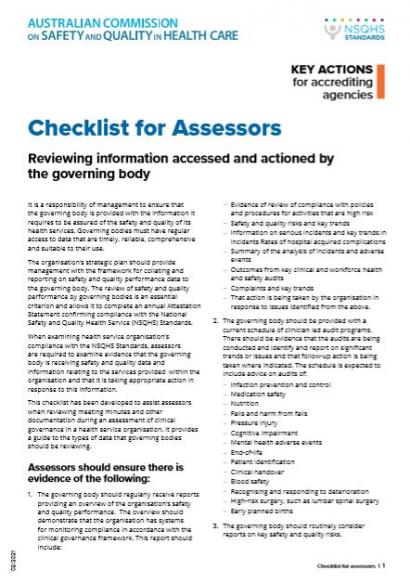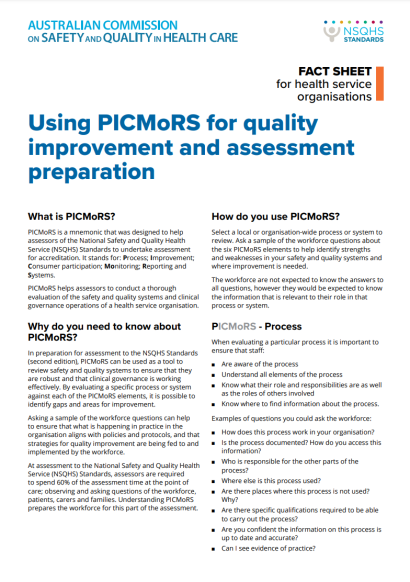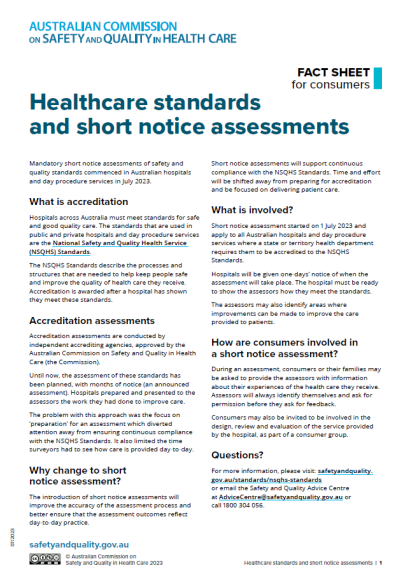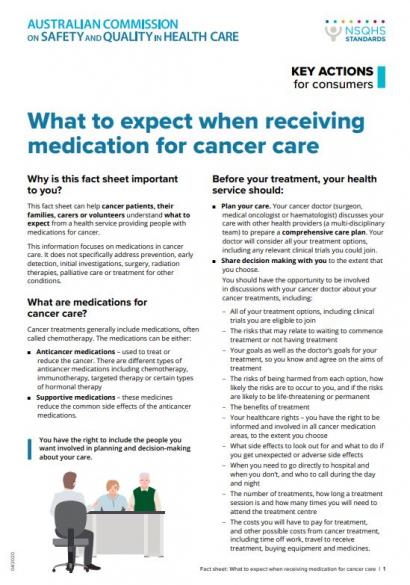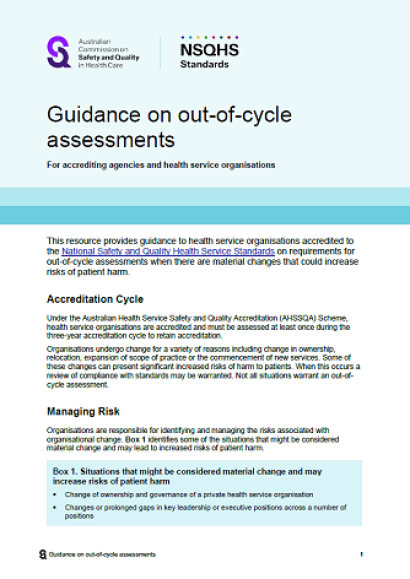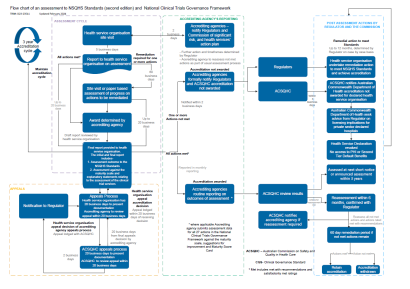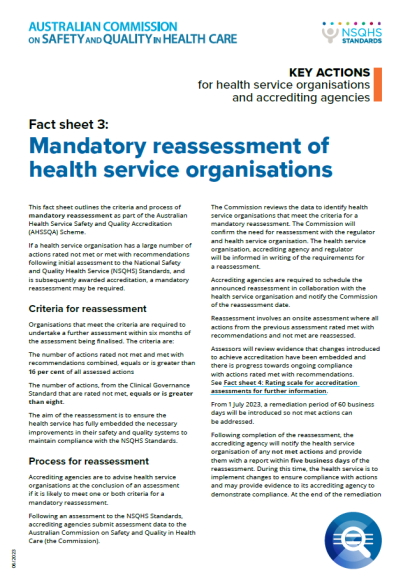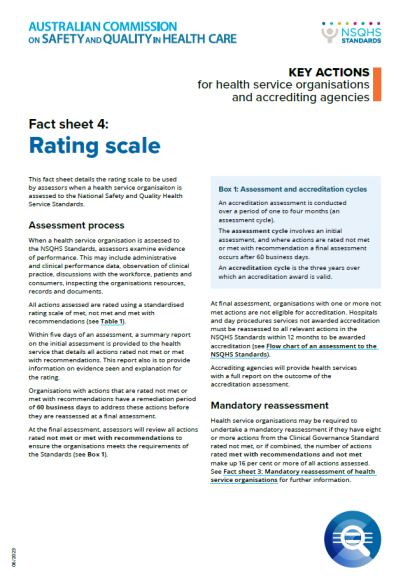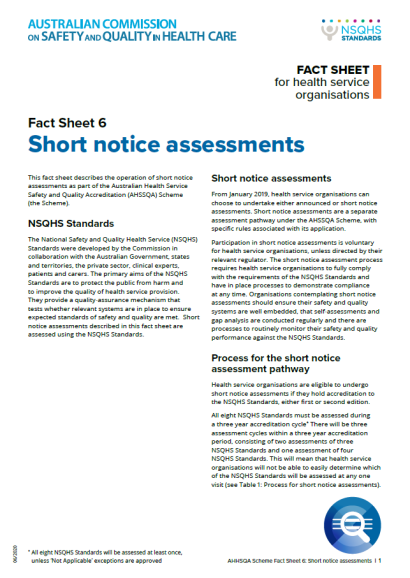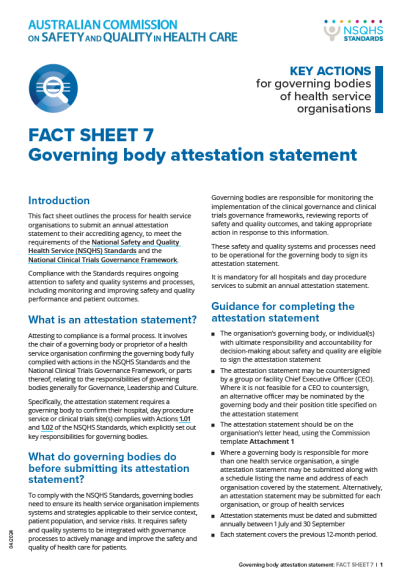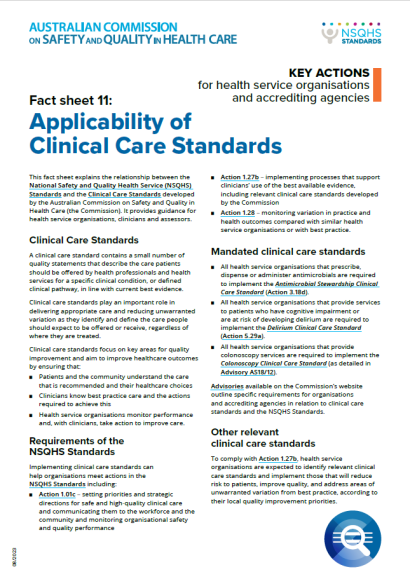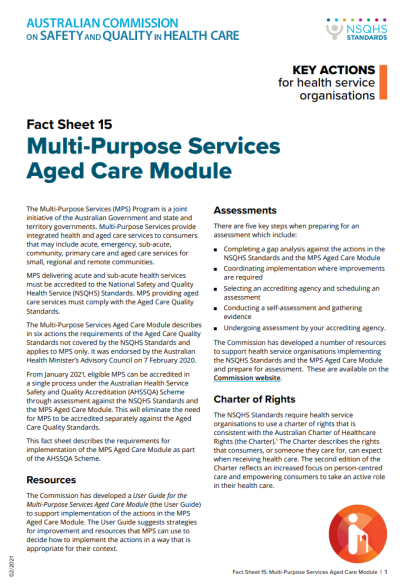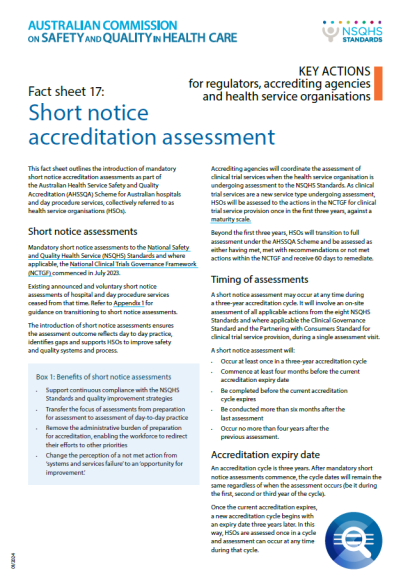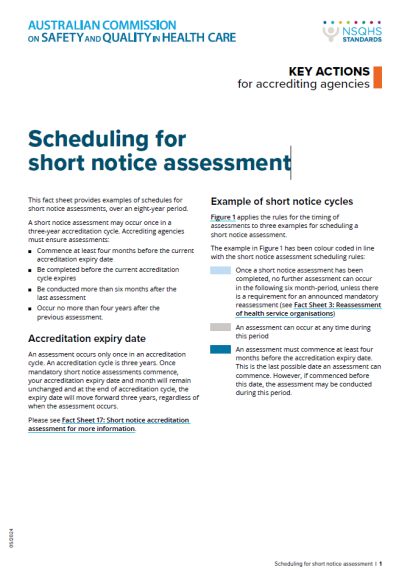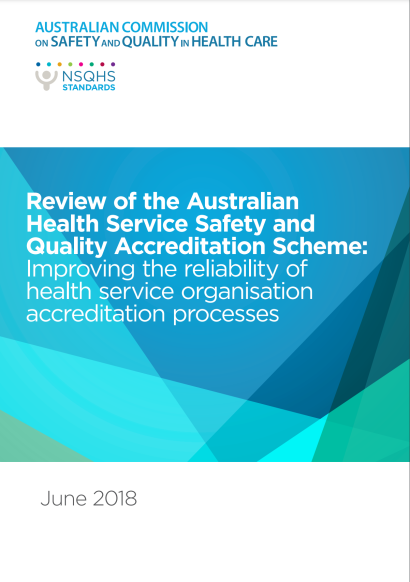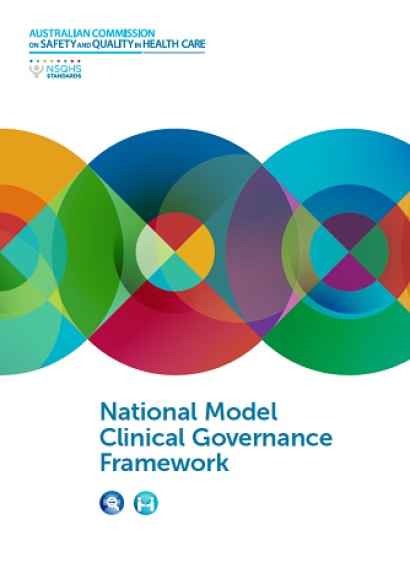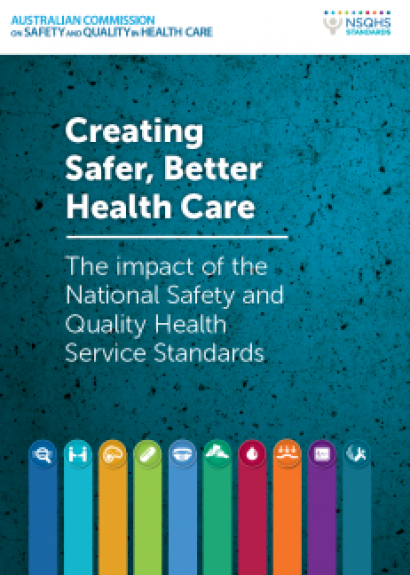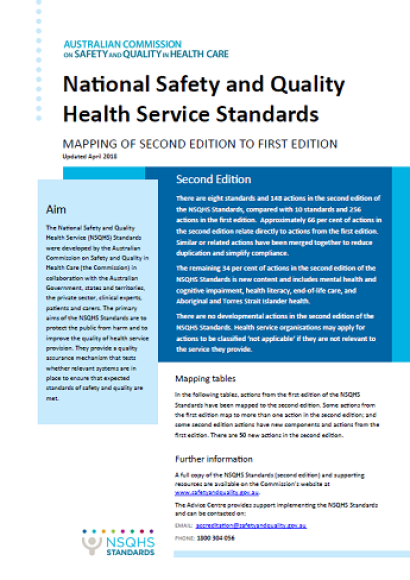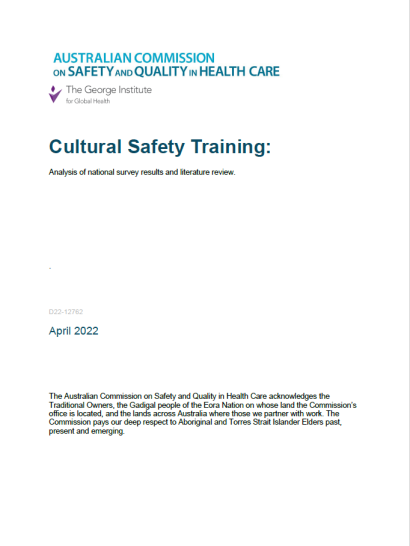Resources for the NSQHS Standards
The Commission has developed resources to assist health service organisations align their patient safety and quality improvement programs using the framework of the National Safety and Quality Health Service (NSQHS) Standards.
Download the NSQHS Standards
The second edition of the NSQHS Standards was endorsed by Health Ministers in June 2017, released in November 2017 and updated in May 2021. This document contains the NSQHS Standards, criteria and actions. The Commission has not printed hard copies of this booklet.
Guide for Ambulance Health Services
The National Safety and Quality Health Service (NSQHS) Standards Guide for Ambulance Health Services was developed with a broad range of industry experts to interpret the NSQHS Standards for ambulance health services implementing the Standards.
Summary of advisories, fact sheets and guides
This page summarises links between NSQHS Standards advisories, fact sheets and primary NSQHS Standards actions. It outlines the intent, timeframes and requirements for health service organisations. The referenced dates relate to the most current published versions. Version control cannot be guaranteed when this document is printed.
View summary of advisories, fact sheets and guides
User guides
The user guides are designed to support health service organisations improve the safety and quality of care they provide by using the NSQHS Standards as a framework for improvement. The Commission has not printed hard copies of these user guides.
- Note: The New South Wales Clinical Excellence Commission, in consultation with the Commission has made the decision to decommission the Medication Safety Self-Assessment (MSSA®) for Australian Hospitals on 30 September 2025. In response to the discontinuation, the Commission has notified states, territories and accreditation bodies and in August 2025, will remove references to the MSSA® for Australian Hospitals from its website. A disclaimer will be added to the webpage where the implementation guide for the National Safety and Quality Health Service Medication Safety Standard is hosted. Health services that wish to continue using the MSSA® may purchase their own licence from the Institute of Safe Medication Practices (ISMP) Canada’s MSSA®.
National Clinical Trials Governance Framework
Workbooks, risk matrices and monitoring tools
Advisories
An NSQHS Standards advisory is a formal communication from the Commission to accrediting agencies to provide guidance and direction on the interpretation and/or assessment of the NSQHS Standards. The NSQHS Standards advisories are routinely reviewed to ensure they remain current. Any changes to any advisory are summarised in the notes section of the advisory’s cover sheet.
Fact sheets
AHSSQA Scheme
National Model Clinical Governance Framework
Medication management in cancer care
Impact of the NSQHS Standards
Mapping of the first and second editions
Live literature searches
The live literature searches can be used to find evidence to support best practice in line with Australian National Safety and Quality Health Service Standards.
Other reports and literature reviews
Private dental practices
From 1 May 2024, accreditation for private dental practices transitioned to the Primary and Community Healthcare Standards. Prior to this, practices have been assessed against the first edition of the National Safety and Quality Health Service (NSQHS) Standards.
A range of resources are available here to support practices to prepare for accreditation.

